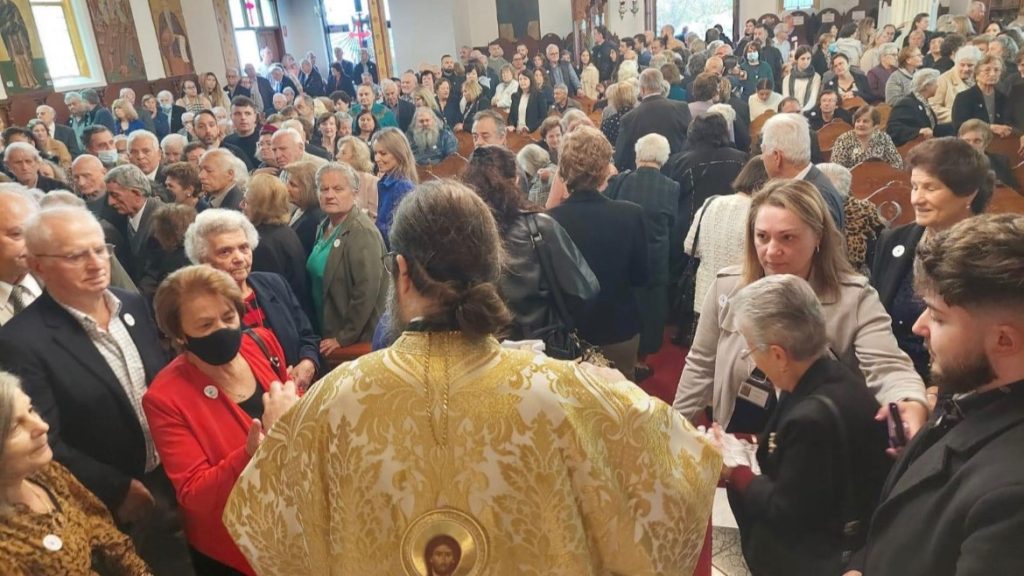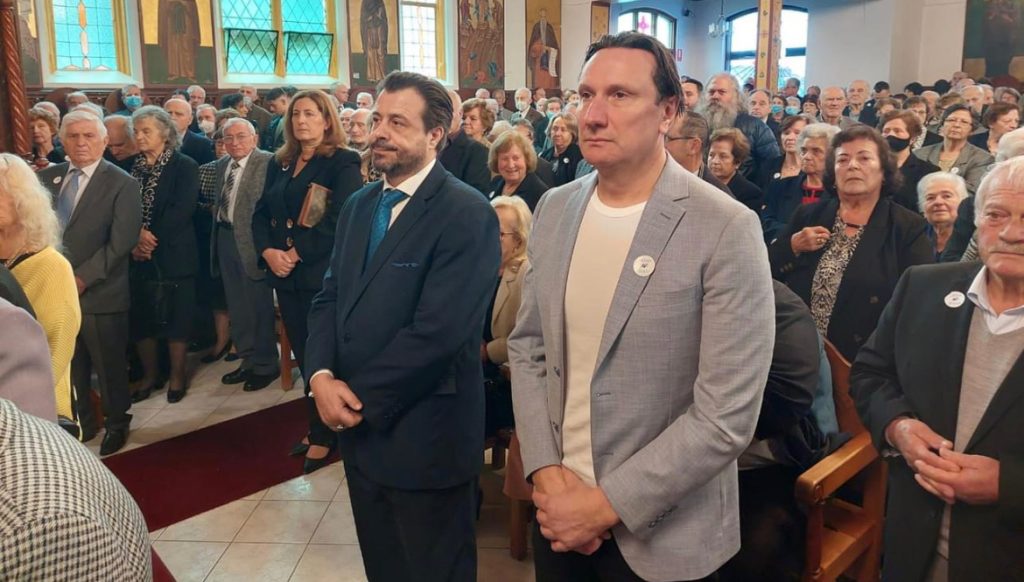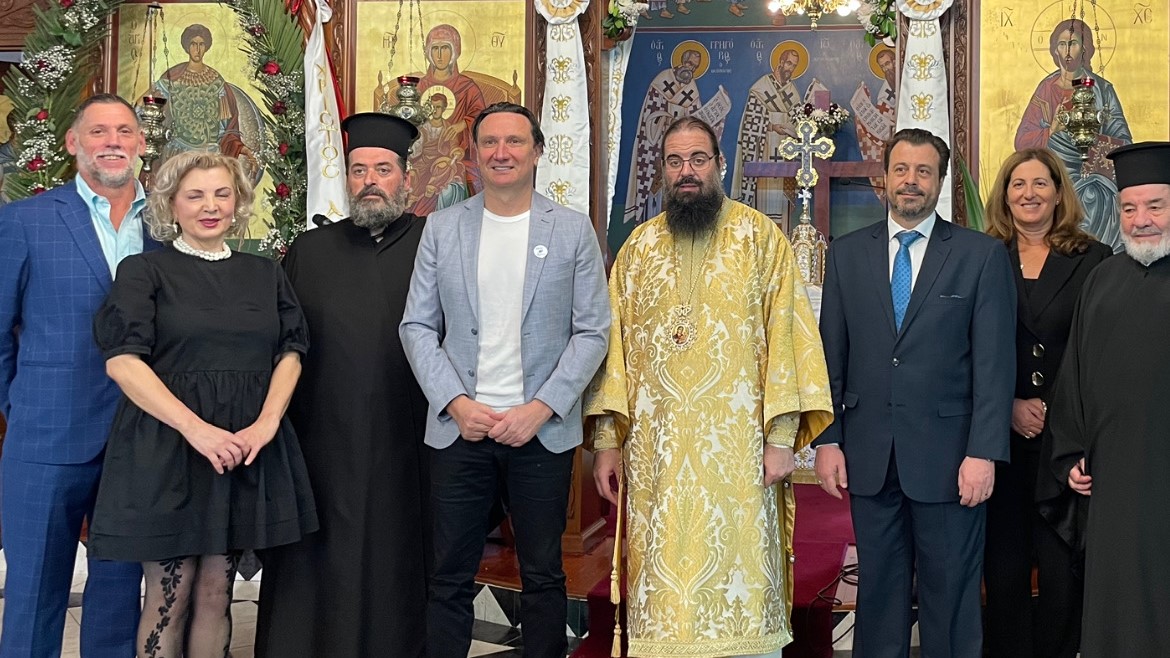The Greek Community of Melbourne’s St George church in Thornbury celebrated its Feast Day on
Sunday 23 April. Joining the community for both the service and the Feast was Consulate General
Emmanuel Kakavelakis, Bill Papastergiadis OAM, and GCM board members Helene Hiotis and Jeana
Vithoulkas.
With close to 1000 people in attendance the feast day for St George was a terrific festive day for all.
As part of the festivities, the GCM along with the parish community had organised a number of
activities including a marque, a jumping castle for the kids, live music, the GCM dance group and
delicious food.

In his sermon Bishop Evmenios made particular mention in his speech of the great work done by the
parish priest Harris Vezos and on how he has brought together the community and given new life to
this church. Bishop Evmenios also thanked Bill P and his board for the day’s organisation at the
church and for their leadership in the community.
A function had been organised post the service int eh hall adjoining the hall. At the event was the
dance group of the GCM led by Nick Papaefthimiou which gave an outstanding performance of
dances. A band with lead singer Tsourdalakis entertained the crowd.

In his speech, Bill P noted that he had spent one hour that morning call of the Georges he knows as it
seems half our paroikia is named George. Bill P also to the loud applause of the crowd announced a
significant investment by the GCM on infrastructure programs for the Hall such that it can be used as
a multipurpose venue and is renovated.
These works will take place within one year with the support of the Federal Government In the
history of Christianity, few figures inspire as much reverence as Saint George.

About Saint George:
The patron saint of several localities, including England and Georgia, Saint George is the epitome of
knightly virtue and chivalry. Throughout history, stories persist of the life of Saint George, including
his service as a Roman soldier and his slaying of a fearsome dragon. Following his martyrdom in 303,
Saint George became recognized as a holy saint in the Orthodox Christian Church.
When George came of age, he chose to serve in the Roman army like his father. A brave warrior with
a charming personality, George quickly endeared himself to his superiors and rose through the ranks
of the Roman officer corps. In 303, George found himself in Nicomedia in the personal guard of the
Emperor Diocletian.
When Diocletian ordered the persecution of Christians in Nicomedia, George refused to participate
and revealed his faith. The emperor then brutally tortured the noble soldier before having him
decapitated near the city wall. George’s suffering led thousands of citizens in Nicomedia to convert
to Christianity, including Empress Alexandra.

